Panasonic Lumix S 100-500mm f/5-7.1 O.I.S. lens
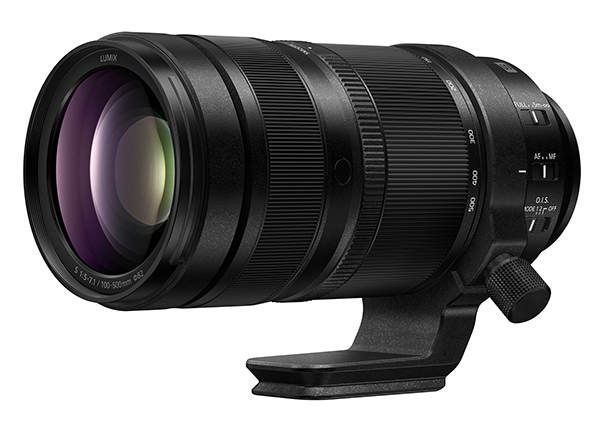
In summary
The Lumix S 100-500mm f/5.0-7.1 lens will suit keen ports and wildlife shooters (particularly birders) who already own one of Panasonic’s S-series full frame cameras and are looking for a relatively compact and lightweight lens they can use on location. Having the easily-removable tripod collar is a real benefit for such users.
The built-in stabilisation and near-silent autofocusing make this lens equally suitable for stills shooting and video recording. Minimal focus breathing and minimal shifting of the focus position during zooming are further benefits for videography.
Full review
Announced on 25 September 2025, the Lumix S 100-500mm f/5.0-7.1 lens is a long-awaited addition to Panasonic’s L-mount range and fills an important gap in its super-telephoto offerings for wildlife and sports photographers. This lens is compact for its coverage, with an overall length of just 196.1 mm at the 100mm focal length and weighing only 1285 grams without the tripod collar. Installing the tripod collar increases the overall weight by approximately 180 grams. It also supports optional lens teleconverters, including the Lumix STC20 2x teleconverter.

Angled view of the Lumix S 100-500mm f/5-7.1 O.I.S. lens with the supplied tripod collar fitted. (Source: Panasonic.)
The optical design of the lens contains 19 elements in 12 groups and includes two extra-low dispersion (ED) and two ultra-ED (USD) glass elements to suppress colour fringing plus two elements made from ultra-high refractive (UHR) glass to correct curvature. It also features a dust-, splash- and freeze-resistant design with a fluorine coating on the front element to repel moisture and dust.
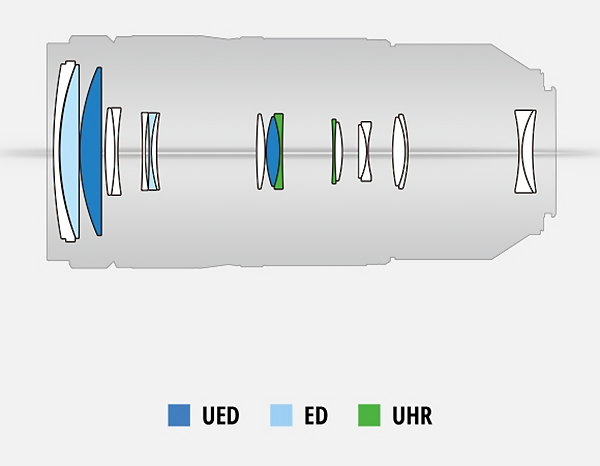
The optical design of the Lumix S 100-500mm f/5-7.1 O.I.S. lens, showing the positions of the exotic elements. (Source: Panasonic.)
Autofocusing is driven by a Dual Phase Linear Motor, which provides near-silent focusing and suppresses focus breathing. Manual focus adjustments can also be made while zooming in or out without the focus drifting off the subject.
Built-in stabilisation claims up to seven stops off camera shake correction, when combined with Dual I.S. 2 image stabilisation in a Lumix S camera. You can set the stabilisation to ‘Always’ on or ‘On half-press’ and use the slider switch on the lens barrel to switch between MODE 1 for general shooting and MODE 2, which is optimised for panning and can automatically detect and compensate for the direction of motion.
Who’s it For?
This lens will suit keen ports and wildlife shooters (particularly birders) who already own one of Panasonic’s S-series full frame cameras and are looking for a relatively compact and lightweight lens they can use on location. Having the easily-removable tripod collar is a real benefit for such users.
The built-in stabilisation and near-silent autofocusing make this lens equally suitable for stills shooting and video recording. Minimal focus breathing and minimal shifting of the focus position during zooming are further benefits for videography.
There aren’t many ultra-telephoto lenses available for L-mount cameras but the new Panasonic lens is the lightest option for its zoom range. Sigma’s 150-600mm f/5-6.3 DG DN OS Sports lens has a slightly longer reach and is faster at its longest focal length (600mm) but, at 2.1 kg it’s considerably heavier than the 1.285 kg Panasonic lens so it’s not nearly as portable.
Build and Ergonomics
Panasonic doesn’t specify the materials used in the construction of the Lumix S 100-500mm f/5-7.1 O.I.S. lens, but a fair bit of polycarbonate plastic has probably been used to keep the overall weight down. Build quality is up to the standard you would expect from an S series lens and there’s a solid metal mounting plate and extensive dust- and moisture-resistant sealing, as shown in the illustration below.
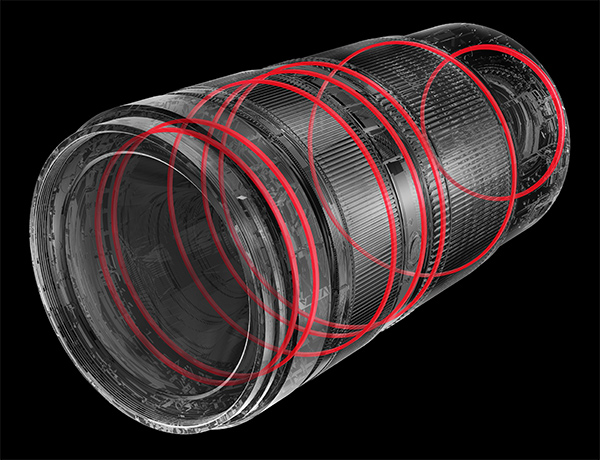
This lens extends by approximately 80 mm when you zoom from 100mm to 500mm. As you zoom, the maximum and minimum aperture settings change, as shown in the table below.
| 100mm | 150mm | 200mm | 300mm | 400mm | 500mm | |
| Maximum aperture | f/5.0 | f/5.7 | f/6.2 | f/6.5 | f/6.8 | f/7.1 |
| Minimum aperture | f/29 | f/32 | f/36 | f/36 | f/38 | f/40 |
The front element of the lens is approximately 66 mm in diameter and surrounded by a narrow (~5 mm wide) band, which ends in a vertical threaded ring that accepts 82 mm diameter filters. A bayonet fitting for the cylindrical lens hood surrounds its outer edge, with a 15 mm wide band behind it on the extending inner barrel.
The front section of the outer barrel begins with the 30 mm deep focusing ring, which supports both linear and non-linear modes. In non-linear mode, the focus shifts vary depending on how fast you turn the ring, allowing for quick adjustments. In linear mode, focus shifts at a consistent, user-defined rate, providing precise, mechanical-like control.
This ring has a 22 mm wide band of fine rubber ridging to provide a secure grip. As focusing is driven from the camera, it turns through 360 degrees when power is off. The ring is customisable through the camera’s menu.
Behind the focusing ring is a 16 mm band that ends in the new tight-smooth ring that lets users adjust the zoom ring’s feel for optimal control. It is 10 mm wide and partly covered in thick moulded ribbing and has a white index dot for aligning the adjustment. The Fn (Focus) button is located around the left side of this band.
This button provides quick access to assigned functions such as the Hybrid Zoom setting. This function combines optical zoom and cropping to extend the telephoto range using only the zoom ring without changing the focal length at the wide-end.
The zoom ring is located immediately behind the tight-smooth ring. It’s 48 mm wide, with most of its surface clad in rubberised ridging. The zoom ring turns smoothly through just over 90 degrees when it is moved between the 100mm and the 500mm positions.
A 6 mm wide unridged band around the trailing edge carries engraved markings for the 100mm, 150mm, 200mm, 300mm, 400mm and 500mm focal length settings, which line up against a white line on the fixed, 40 mm wide, section of the lens barrel behind the zoom ring. Three slider controls are situated on the left flank of this band. The top one is the focus distance limiter, which has settings for full range coverage and restricting the range from the near distance to five metres to improve focusing speed and accuracy. Below it is the Auto/Manual focus switch, with the IS selector further down. Around the right side of the barrel is the zoom limit switch, which can be set to restrict the lens to its 150mm setting when you use a teleconverter to prevent the rear element of the lens touching the teleconverter lens.
The removable tripod collar slots into the front section of this band and is held in place by a large screw-in clamp that doubles as a locking button. It’s easy to release the clamp’s tension to rotate the lens and just as simple to pull out the button and remove the collar when you want to hand-hold the lens.
The lens barrel ends in the L-series bayonet mount, which has a chromed metal mounting plate that fits firmly to the camera body with a firm rubber gasket to exclude moisture and dust.
Performance
Thanks to our revised testing techniques, we were able to measure the optical performance across the full focal length range of the lens, from 100mm to 500mm. The best performance was recorded between f/5 and f/6.3 with the 100mm focal length, as shown in the graph of our test results below.
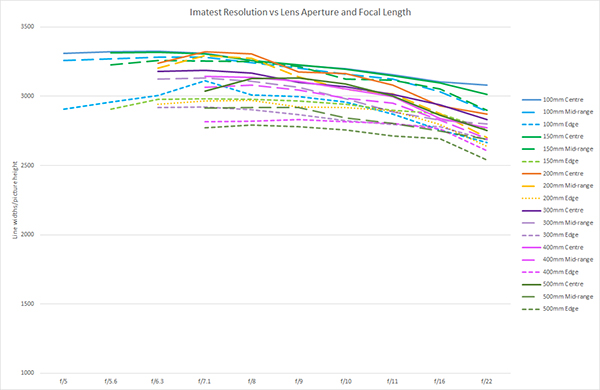
Centre-of-frame resolution comfortably exceeded expectations with the 100mm and 150mm and came close to meeting expectations at other focal lengths, although at the 500mm focal length this happened only a couple of stops down from maximum aperture. RW2.RAW files converted into 16-bit TIFF format with Adobe Camera Raw delivered even higher resolution, as expected, particularly in the centre of the frame.
Because the Lumix S1 II camera we used for our tests automatically corrects lateral chromatic aberration by default (and so does Adobe Camera Raw), we’re no longer able to quantify chromatic aberration. However. We found no obvious evidence of coloured fringing in test shots so it’s safe to assume recent Panasonic cameras handle this aberration competently.
Vignetting and distortion were assessed by examining test shots taken with all in-camera corrections disabled. We observed slight vignetting at the maximum aperture, in each of the five focal lengths we investigated: 100mm, 200mm, 300mm, 400mm and 500mm. As expected, closing the aperture by a stop made it virtually invisible.
Rectilinear distortion was effectively negligible at all focal lengths, a normal situation with super telephoto lenses. Perspective compression became obvious from about 300mm on.
Even though no lens hood was supplied with the lens for our review, backlit subjects were handled quite well and we found little evidence of flare. Sharp, 22-pointed sunstars were possible at minimum apertures with all focal length settings, with a few minor flare artefacts at some focal lengths.
As usual, bokeh in wide-aperture shots is influenced by the selected lens aperture as well as the background lighting. With evenly-lit backgrounds, the maximum aperture settings produced variable degrees of blurring in out-of-focus foregrounds and backgrounds, depending on the selected focal length. However, we noticed some outlining of brighter areas in shots with uneven lighting. More evenly-blurred backgrounds were possible at longer focal lengths, despite their smaller aperture settings.
Longer focal lengths also produced some interesting perspective compression effects, which have potential for creative use. An example is shown in the Samples section of this review.
Autofocusing performance with the S1 II camera was generally good, thanks largely to the dual linear autofocus motors. Focusing was fast enough to allow the lens to be used for handheld shooting in normal daylight, thanks to the seven-stop Dual I.S. 2 image stabilisation in the camera and lens.
The Zoom Limit slider is particularly useful when shooting handheld, although it’s worth noting it can be tricky to disengage when the lens is set to 150mm. Fortunately, zooming in a little will allow the catch to release.
We were unable to test the lens with a teleconverter.
Conclusion
Login or Register to access the full article.
SPECS
Picture angle: 24 to 5 degrees diagonal
Minimum aperture: f/29-40
Lens construction: 19 elements in 12 groups (including 2x UED, 2x ED and 2x UHR elements), fluorine coating on front element
Lens mounts: L-mount
Diaphragm Blades: 11 (rounded)
Weather resistance: Dust- and splash-resistant
Focus drive: Dual Phase Linear Motor
Stabilisation: Yes; Dual I.S. 2, up to 7 stops of shake correction
Minimum focus: 80 cm at 100mm; 1.5 metres at 500mm
Maximum magnification: 0.16x at 100mm; 0.36x at 500mm
Filter size: 82 mm
Dimensions (Diameter x L): 92.0 x 196.1 mm without tripod collar
Weight: 1285 grams without tripod collar
Standard Accessories: Front and rear caps, removable tripod collar
Distributor: Panasonic Australia
TESTS
Based upon JPEG files taken with the Lumix S1 II camera.
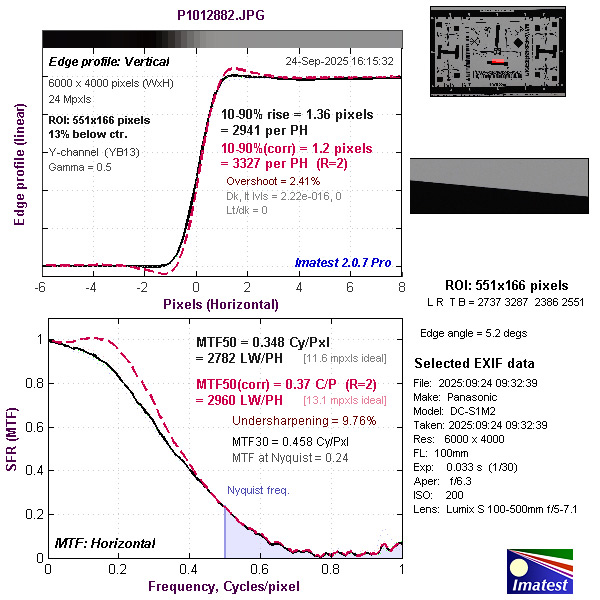
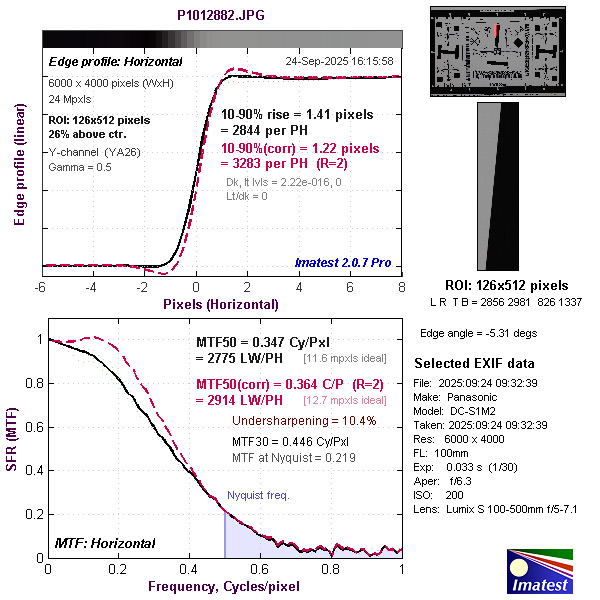
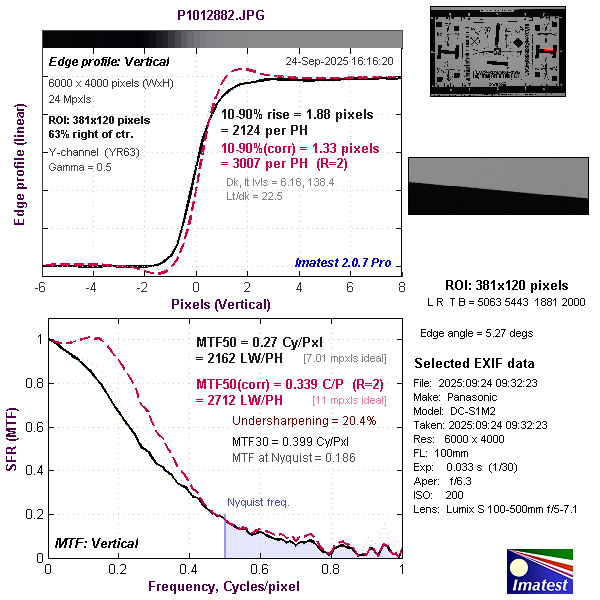
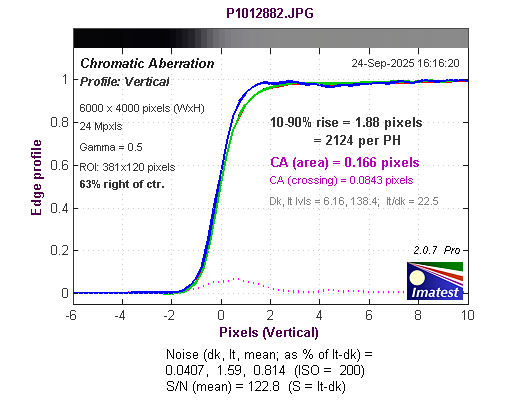
Based on RW2.RAW files recorded simultaneously and converted into 16-bit TIFF format with Adobe Camera Raw.
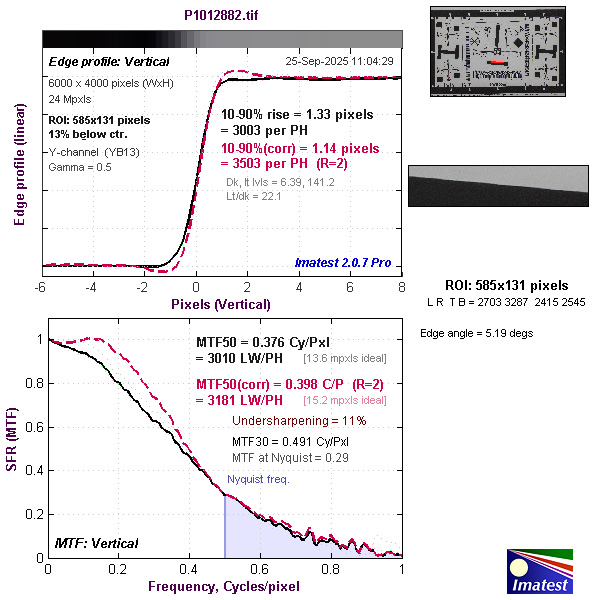
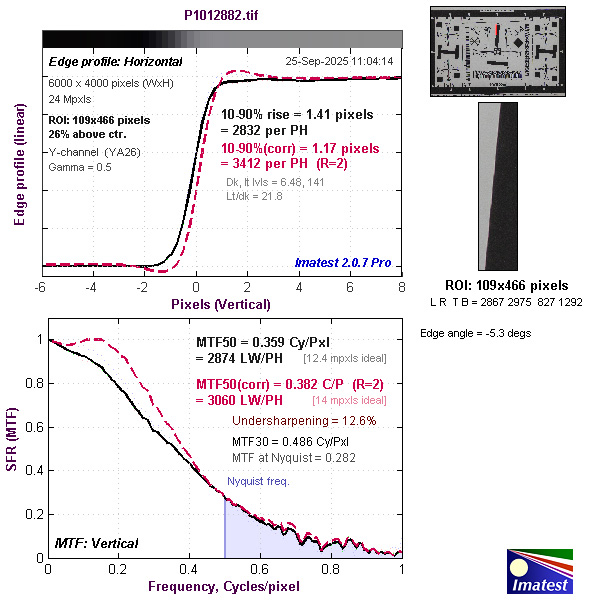
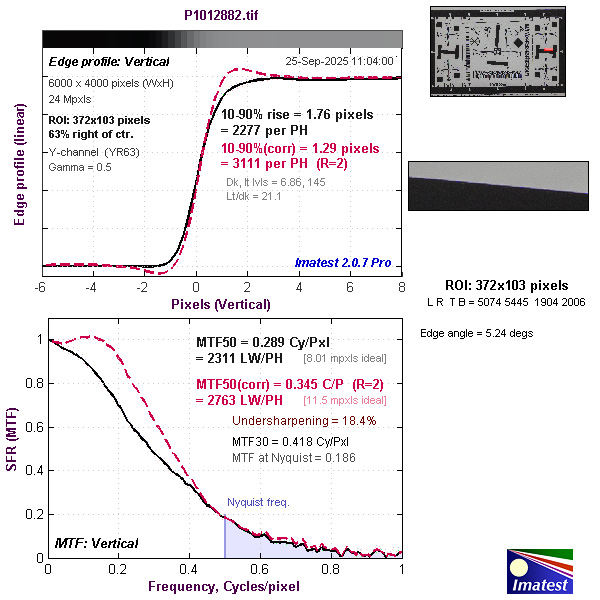
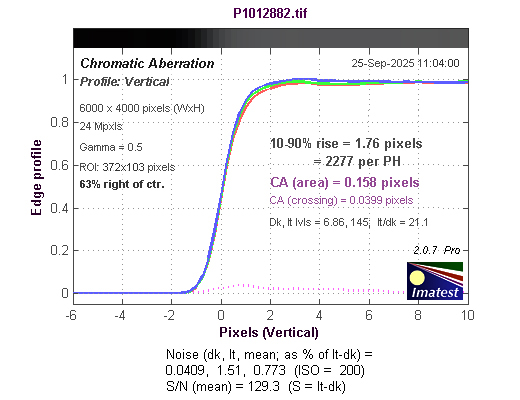
SAMPLES

Vignetting at 100mm f/5.0.

Vignetting at 300mm f/6.5.

Vignetting at 500mm f/7.1.
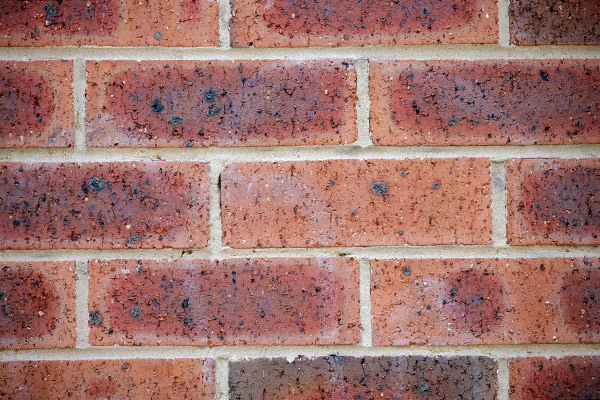
Rectilinear distortion at 100mm.
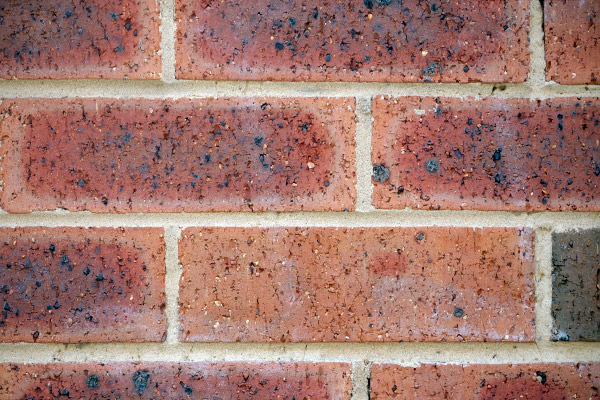
Rectilinear distortion at 300mm.

Rectilinear distortion at 500mm.
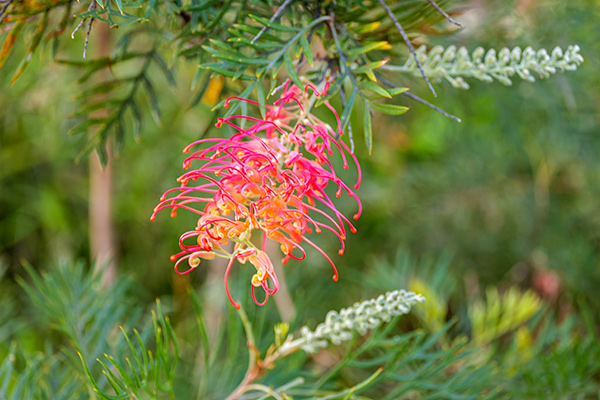
Close-up at 100mm focal length, ISO 500, 1/125 second at f/5.
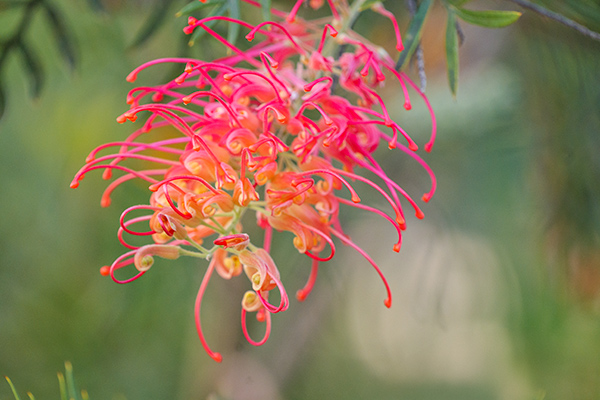
Close-up at 500mm, ISO 4000, 1/640 second at f/7.1.
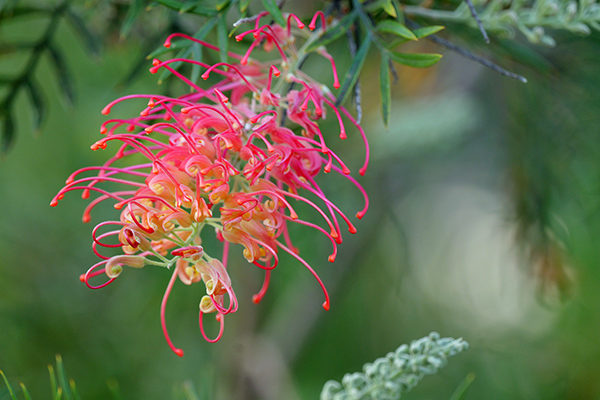
Close-up at 400mm focal length, ISO 3200, 1/500 second at f/6.8.
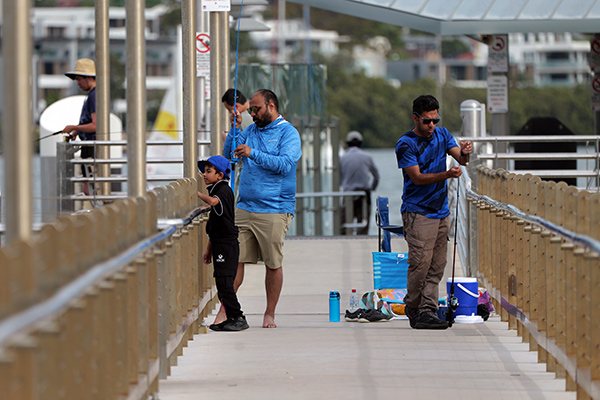
Perspective compression at 500mm focal length, ISO 250, 1/640 second at f/7.1.
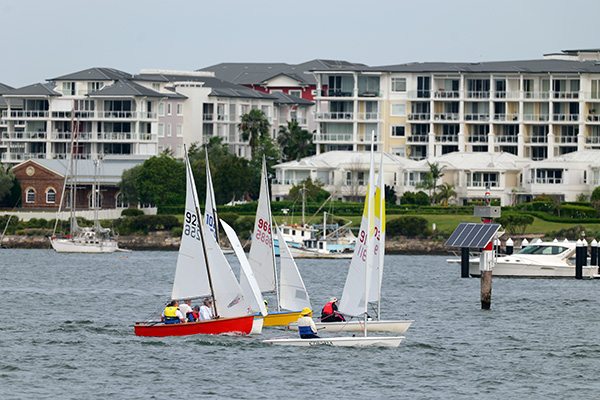
500mm focal length, ISO 200, 1/640 second at f/7.1.

Crop from the above image magnified to 100%.
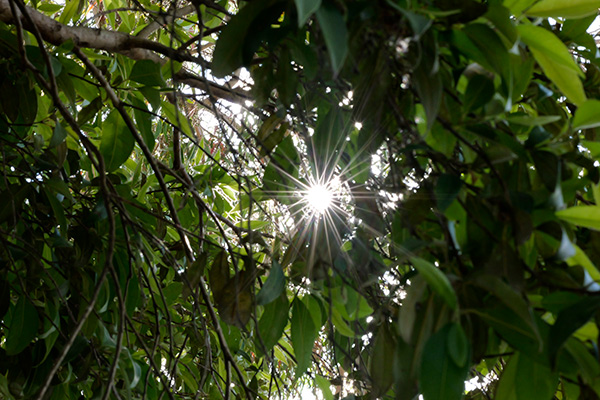
Sunstar at 100mm, ISO 5000, 1/125 second at f/29.
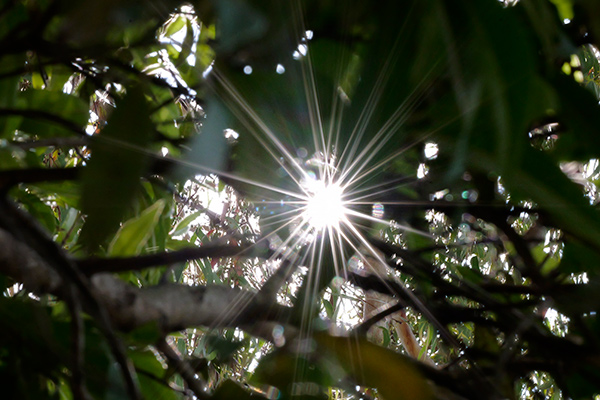
Sunstar at 200mm, ISO 6400, 1/160 second at f/362.
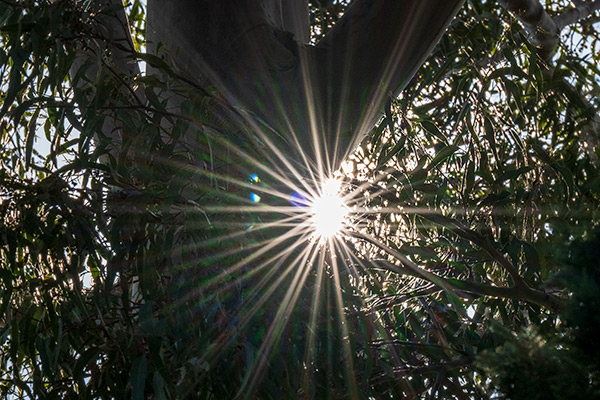
Sunstar at 500mm, ISO 5000, 1/640 second at f/40.
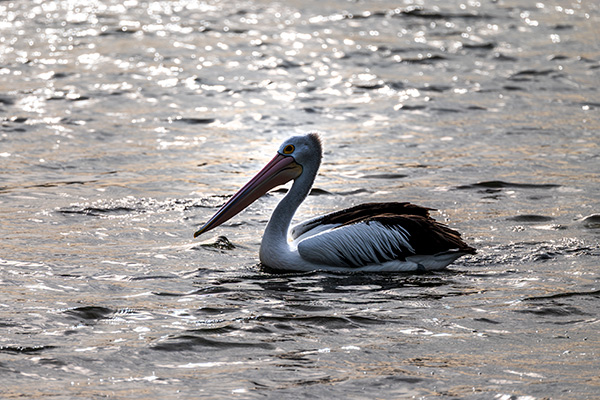
Backlighting; 500mm focal length, ISO 100, 1/800 second at f/7.1.
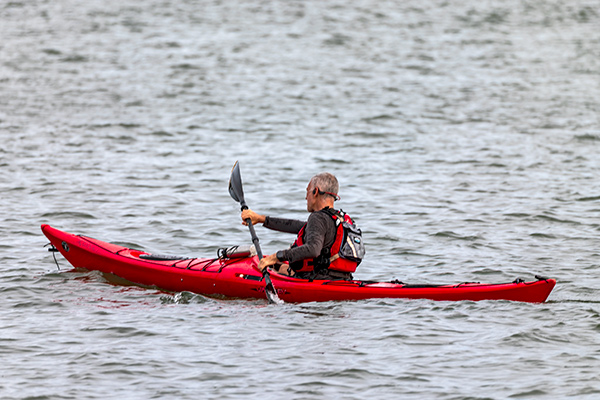
500mm focal length, ISO 200, 1/640 second at f/7.1.
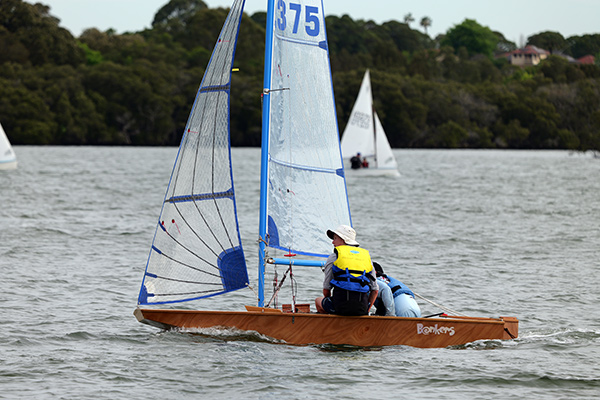
308mm focal length, ISO 100, 1/400 second at f/6.83.
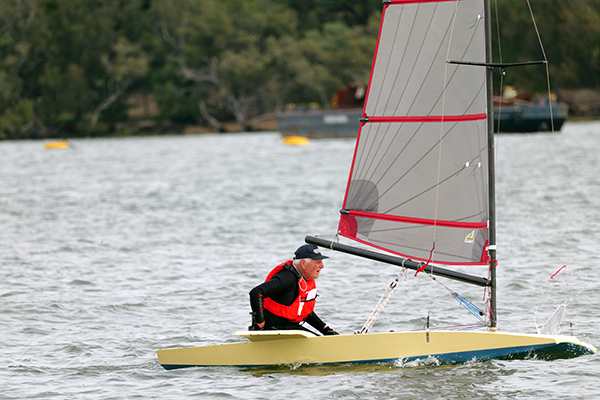
498mm focal length, ISO 400, 1/640 second at f/8.
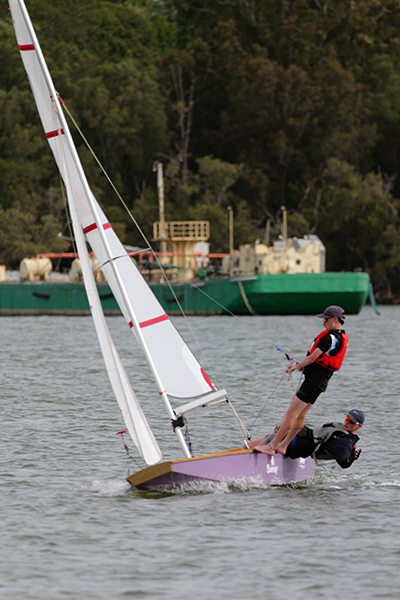
500mm focal length, ISO 250, 1/640 second at f/7.1.
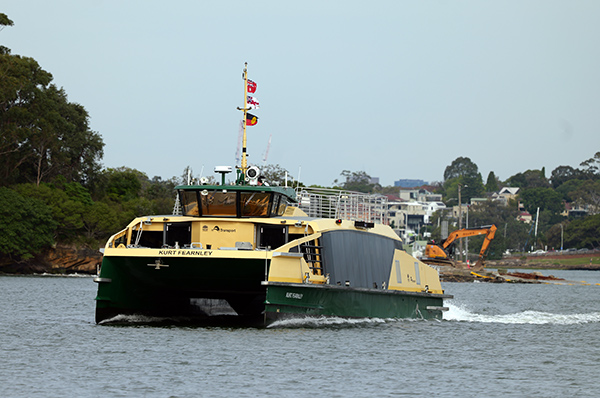
392mm focal length, ISO 125, 1/500 second at f/6.8.
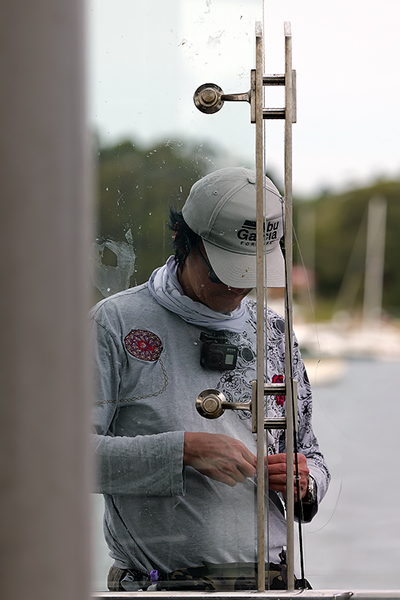
241mm focal length, ISO 160, 1/320 second at f/6.4.
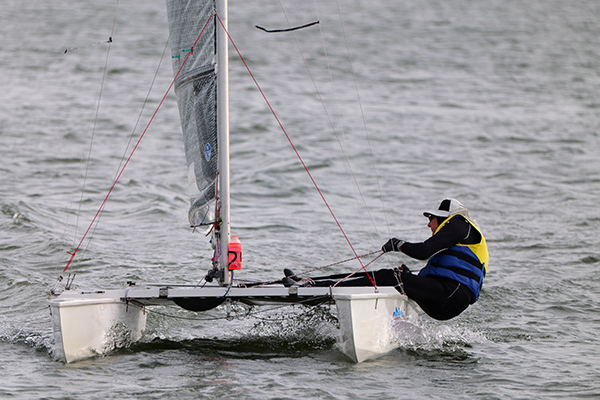
500mm focal length, ISO 200, 1/640 second at f/7.1.
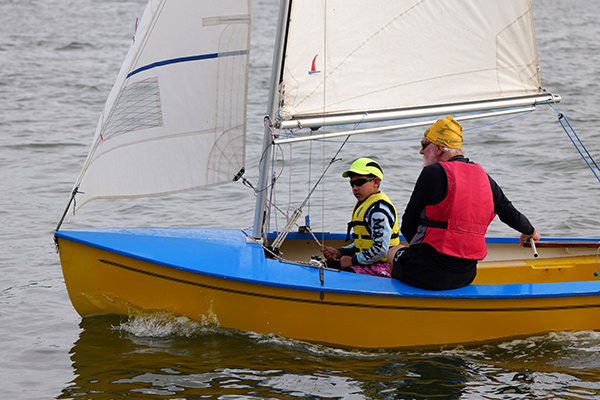
147mm focal length, ISO 100, 1/320 second at f/6.3.
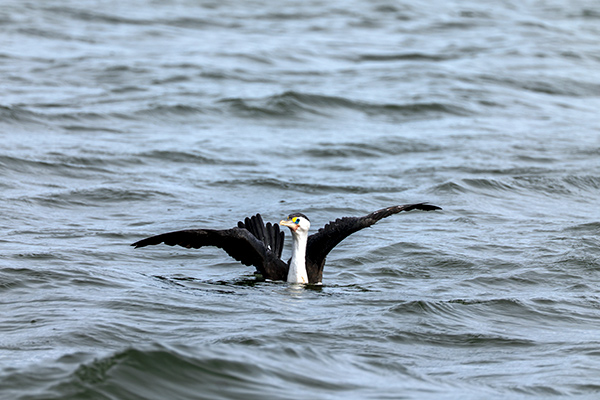
Hybrid zoom at 500mm focal length, ISO 200, 1/640 second at f/7.1.

500mm focal length, ISO 125, 1/640 second at f/7.1.

50mm focal length, ISO 100, 1/640 second at f/7.1.
Rating
RRP: AU$3,699
- Build: 8.9
- Handling: 8.9
- Image quality: 9.0
- Autofocusing: 8.9
- Versatility: 8.7
BUY

